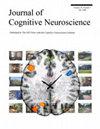Moving and Static Faces, Bodies, Objects, and Scenes Are Differentially Represented across the Three Visual Pathways
IF 3
3区 医学
Q2 NEUROSCIENCES
引用次数: 0
Abstract
Models of human cortex propose the existence of neuroanatomical pathways specialized for different behavioral functions. These pathways include a ventral pathway for object recognition, a dorsal pathway for performing visually guided physical actions, and a recently proposed third pathway for social perception. In the current study, we tested the hypothesis that different categories of moving stimuli are differentially processed across the dorsal and third pathways according to their behavioral implications. Human participants (n = 30) were scanned with fMRI while viewing moving and static stimuli from four categories (faces, bodies, scenes, and objects). A whole-brain group analysis showed that moving bodies and moving objects increased neural responses in the bilateral posterior parietal cortex, parts of the dorsal pathway. By contrast, moving faces and moving bodies increased neural responses, the superior temporal sulcus, part of the third pathway. This pattern of results was also supported by a separate ROI analysis showing that moving stimuli produced more robust neural responses for all visual object categories, particularly in lateral and dorsal brain areas. Our results suggest that dynamic naturalistic stimuli from different categories are routed in specific visual pathways that process dissociable behavioral functions.三种视觉通路对运动和静止的脸部、身体、物体和场景的表征各不相同
人类大脑皮层模型提出,存在专门用于不同行为功能的神经解剖通路。这些通路包括用于识别物体的腹侧通路、用于执行视觉引导的身体动作的背侧通路,以及最近提出的用于社会感知的第三条通路。在本研究中,我们测试了一个假设,即不同类别的移动刺激会根据其行为影响在背侧通路和第三通路上进行不同的处理。我们对人类参与者(n = 30)进行了 fMRI 扫描,同时观察了四个类别(人脸、身体、场景和物体)的移动和静态刺激。全脑分组分析表明,移动的身体和移动的物体增加了双侧顶叶后皮层的神经反应,这是背侧通路的一部分。相比之下,移动的面孔和移动的物体会增加颞上沟的神经反应,这是第三通路的一部分。单独的 ROI 分析也支持这种结果模式,该分析表明,移动刺激对所有视觉对象类别都产生了更强的神经反应,尤其是在侧脑和背脑区域。我们的研究结果表明,不同类别的动态自然刺激会通过特定的视觉通路来处理不同的行为功能。
本文章由计算机程序翻译,如有差异,请以英文原文为准。
求助全文
约1分钟内获得全文
求助全文
来源期刊
CiteScore
5.30
自引率
3.10%
发文量
151
审稿时长
3-8 weeks
期刊介绍:
Journal of Cognitive Neuroscience investigates brain–behavior interaction and promotes lively interchange among the mind sciences.

 求助内容:
求助内容: 应助结果提醒方式:
应助结果提醒方式:


